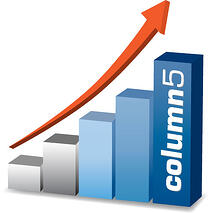 The ultimate goal in any competitive pursuit is to achieve peak performance—and in the enterprise performance management world, that means reaching "column five" in the EPM Maturity Model.
The ultimate goal in any competitive pursuit is to achieve peak performance—and in the enterprise performance management world, that means reaching "column five" in the EPM Maturity Model.
The benefits to be gained from EPM seem apparent: Improving the information, analysis and planning within an organization will realize a significant ROI and provide an improved competitive basis. However figuring out how to embrace EPM and how to develop an EPM strategy that will deliver are key ingredients. This is where mapping to an EPM maturity model can be extremely helpful to framework an EPM program within an organization.
The use of maturity models to understand the current capabilities and develop actions to reach the next level of capabilities is well understood whether it be in the business world or science domain. However, rather than develop some abstracted theoretical maturity for EPM, we see a more pragmatic approach. The simple reasoning behind this is that in reality EPM Maturity in any organization is not consistent across all areas and business processes of an organization – and this is typically where confusion arises.
What do we mean by this?
Let’s start with a simple matrix of the business that shows major business functional area with ‘business enablers’:

The functional areas of an organizational can be at different maturity levels The basis of this matrix is:
- Each functional area can be broken down in to more detail as necessary (we’ll look at this in future postings)
- Each functional area can also be rated against key ‘Business Enablers’ – that is those investment areas that the organization looks to achieve a return from
The key to utilizing the matrix are the entries for completing the Business Enablers:
People Rating
Use and understanding of performance management as an asset for the organization
- Unskilled (score 1)
- Semi-Skilled (score 3)
- Skilled (score 5)
Processes
The level of focus for a business processes to utilize performance management as benefit to the business:
- Business information focus (score 1)
- Business modeling focus (score 3)
- Value management focus (score 5)
Technology
How technology is utilized and leveraged for enabling EPM:
- Excel spreadsheet based (score 1)
- Individual product solutions (score 3)
- Integrated EPM solutions (score 5)
So a simple self-assessment mapping to the matrix may look like this:

With a resulting score matrix of:

In Part II of this blog series we’ll look at expanding the Maturity Matrix what a self-assessment can then tell you about developing an EPM approach.The self-assessment helps you profile your organization in terms of EPM Maturity as part of developing an overall approach to EPM.










